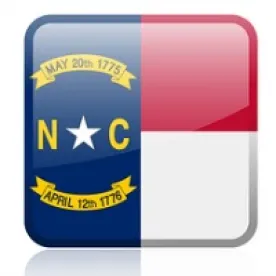In April 2014, we posted a blog discussing the North Carolina Supreme Court’s opinion in Beroth Oil v. NCDOT, 367 N.C. 33, 757 S.E. 2d 466 (2014). (See here) In that post, we compared high frequency stock market trading and the Transportation Corridor Act (the “Act”). We suggested that the Act and high frequency stock market trading serve the same purpose—manipulating market prices to the advantage of traders and the North Carolina Department of Transportation (NCDOT).
The Act allowed NCDOT to cast the dark shadow of condemnation blight over targeted properties by recording a map in the land records and indexing the map under the names of all property owners whose property was included in the possible future road corridor (“Recordation Right”). Thereby, all prospective purchasers were on record notice that the property was targeted for possible future forced acquisition.
The recorded map chilled market value—only those who speculated on monetary recoveries in future condemnation lawsuits were prospective purchasers of the targeted property.
In that earlier post, we noted that two Justices in Beroth Oil dissented and concurred in part with the majority’s opinion. These Justices were ready to conclude that when a recorded corridor map had interfered with property owners’ rights, an inverse condemnation had occurred.
Today, our post discusses Kirby v. NCDOT, 2016WL3221090 (June 10, 2016), a unanimous opinion of the North Carolina Supreme Court written by Justice Newby, the justice who wrote the dissenting and concurring opinion in Beroth Oil.
Kirby v. NCDOT
In addition to the Recordation Right, the Act imposes a duty on local governments forbidding them to issue development approvals for property shown within the corridor of a recorded map (“Permit Duty”). The duration of Permit Duty could be three (3) years after application for a permit and potentially an indefinite period. The legal effect of the Permit Duty is the focus in Kirby v. NCDOT, 2016WL3221090 (June 10, 2016).
Facts and Trial Court Ruling
In Kirby v. NCDOT, the plaintiffs (property owners) filed numerous claims against NCDOT arising from NCDOT’s recordation of corridor maps for Western or Eastern Loops of the Northern Beltway, a planned loop around Winston-Salem, North Carolina. One of the claims was a claim of inverse condemnation. NCDOT sought summary judgment on the inverse condemnation claim and the trial court granted summary judgment in favor of NCDOT and dismissed the plaintiffs’ inverse condemnation claim without prejudice as being unripe.
The North Carolina Court of Appeals
The North Carolina Court of Appeals reversed the trial court. The Court of Appeals surveyed the law of inverse condemnation, noting that under the power of eminent domain, the sovereign determined the extent of the taking and its duration.
According to the Court of Appeals, both police powers – the power to regulate property to prevent detriment to the general welfare - and eminent domain powers – the power to take property because of its need for public use - reside in the sovereign.
The Court of Appeals noted that the title of the enabling legislation for the Act stated that it was “to control the cost of acquiring rights-of-way,” and that the public detriment the Act avoided—increased acquisition costs—arose only when NCDOT actually committed to constructing the road and sought to acquire the property shown on the corridor map.
The Court of Appeals observed that, a “mere plotting or planning in anticipation of a public improvement is not a taking”. Kirby 769 S.E. 2d 218, 234, quoting Browning v. N.C. State Highway Comm’n, 263 N.C.130, 135(1964). However, the Permit Duty barred local governments from approving development on the land identified by a corridor map. Therefore, the legal effect of recording a corridor map pursuant to the Act was different than a mere plotting or planning in anticipation of a public improvement.
Accordingly, the Court of Appeals concluded that NCDOT exercised its power of eminent domain when it filed the transportation corridor maps. The Court of Appeals reversed the trial court and remanded the case to the trial court to consider evidence as to the extent of damages suffered by each property owner as a result of the respective takings and the amount of compensation due to each property owner.
The North Carolina Supreme Court
The North Carolina Supreme Court affirmed the unanimous decision of the Court of Appeals written by Chief Judge McGee and wrote its own opinion. The North Carolina Supreme Court concluded:
By recording the corridor maps at issue here, which restricted plaintiffs' rights to improve, develop, and subdivide their property for an indefinite period of time, NCDOT effectuated a taking of fundamental property rights. Kirby p. 6.
The North Carolina Supreme Court cited three authors of classic private property rights—William Blackstone, John Locke and James Madison. The Supreme Court emphasized that the fundamental right to property and the jealously guarding against governmental taking of property has existed “from the very beginnings of our republic.” Kirby p. 4.
The North Carolina Supreme Court recognized that fundamental private property rights are subject to reasonable regulations and that “[t]he safety of the people is the supreme law.” Id. However, “[t]he language of the Act plainly points to future condemnation” and “[t]he…Act’s indefinite restraint on fundamental property rights is squarely outside the scope of the police power.” Kirby, p. 5.
The North Carolina Supreme Court directed that the valuation of the property owner’s loss was to be determined by calculating the value of the land before the map was recorded and the value of the land afterwards, taking into account any and all pertinent factors.
Comments
1. In Kirby, NCDOT contended that the Act was a regulatory statute and not an eminent domain law. As reflected by decision of 10 appellate court judges and justices (3 North Carolina Court Judges and 7 North Carolina Supreme Court Justices), NCDOT’s position is wholly unpersuasive in 2015-2016.
It is easy to stop at this “dead loser argument” conclusion and move to the next case. But stopping at this conclusion goes only skin deep. Going deeper provides a more nuanced and meaningful understanding:
a. In 1987, the General Assembly plainly said it was adopting a law to control public costs for acquiring rights-of-way for the state highway system. It was an honest declaration of legislative intent and made the courts’ job to discern the purpose of the Act quite simple.
Now, to insulate policy decisions from meaningful judicial review, the General Assembly would likely state its intent as something like “Uniform State-Wide Planning for State Highways”. Today, people have talking points.
b. If NCDOT’s arguments in 2015-2016 are so feckless, then why did it take 29 years to declare that the effect of recording a map pursuant to the Act triggered a taking?
Respectfully, I suggest that the law and world is different now. With nearly three decades of development of the law of individual private property rights, and the law of various species of takings, the Act was ripe for challenge.
c. NCDOT’s argument that the Act’s interference with property rights was only for three (3) years after a property owner applies for a development permit is mistaken. Similar to building a road, private development requires substantial sums of money expended on planning and permitting and there are multiple interrelated permits and approvals issued consecutively. The world moves quickly and a three-year delay on issuance of a threshold development permit kills most good development ideas.
2. It would be wise to note that the North Carolina Supreme Court used the word “fundamental” six (6) times in its six (6) page opinion and cited three great political and legal thinkers. The discipline of political economy is an important study for lawyers in the 21st century who practice land use law—because political economic philosophy lies behind court decisions—like the operating program running in the background of your computer.
3. Not only has law changed, but technology and real estate development practices have changed too. Today, NCDOT could simply post its corridor maps on the internet and let the marketplace work. In short, one wonders why the Act is necessary in the 21st century.




 />i
/>i
